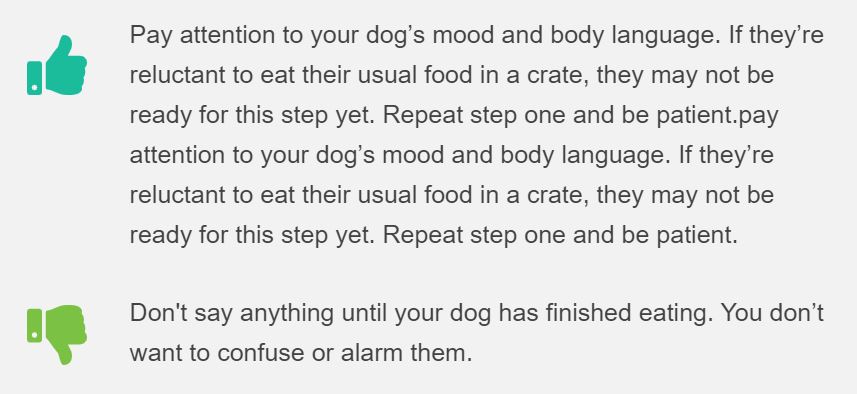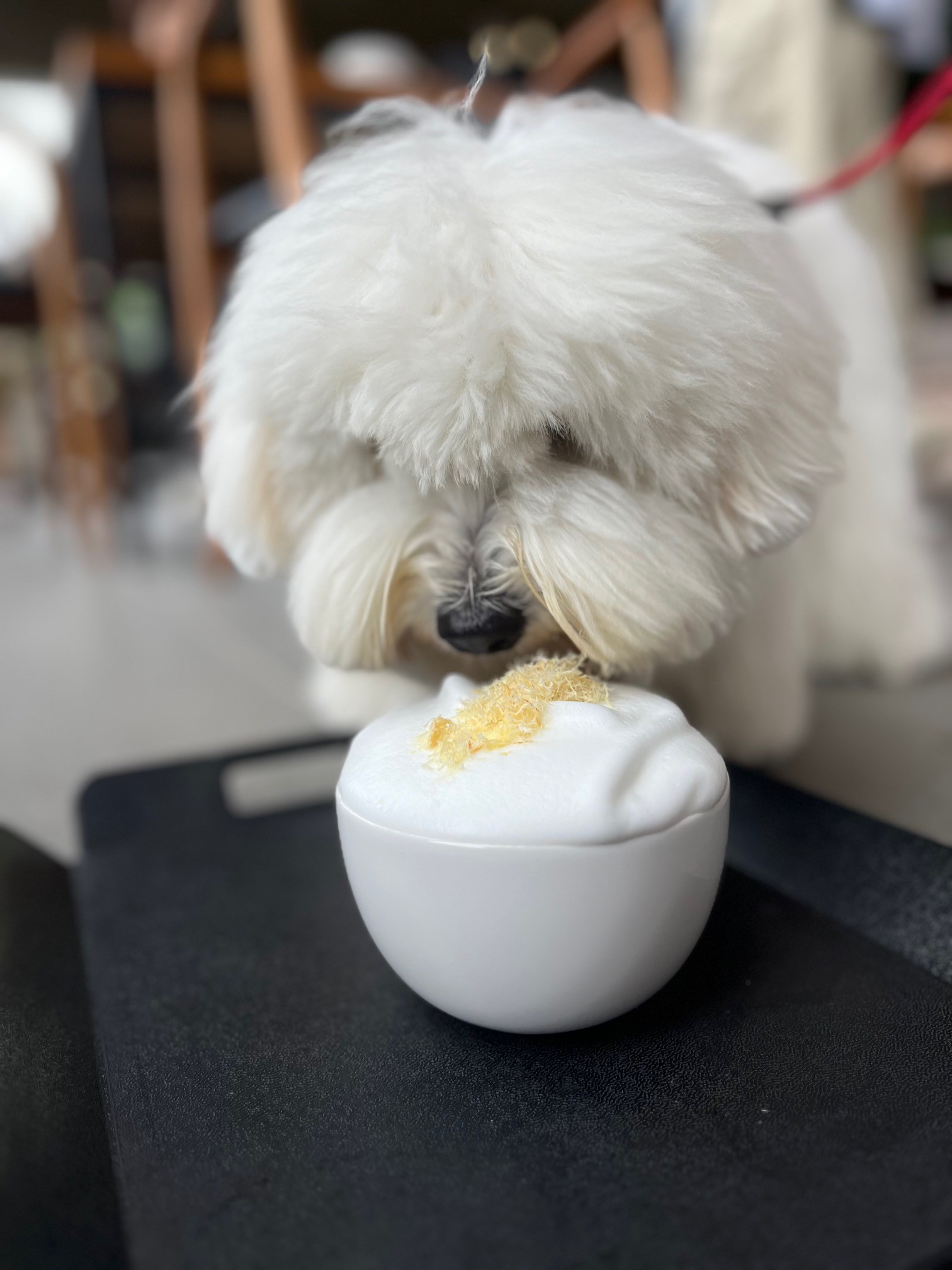First of all crate training a puppy while at work begins with training your puppy when you are NOT at work! Hang on, wait, what?
That’s right. If you want to know the secrets to successfully training your pooch to stay at home while you work all day, then you must train your dog to be well behaved.
I know, it sucks right. The truth is, you can’t leave your dog in a crate for 8 hours a day while you work. It’s illegal in some European countries and its not the real reason why you wanted a puppy.
The question should be “How to train my puppy to live in harmony with my possessions while I am at work”. This would give pet-owners much healthier answers.
Ok so now you are thinking “puppy training is important, ok got it. Learn how to train a puppy, then my puppy will be peacefully laying around the house waiting for me to return. But what happens in the meantime? I have to read the books, take the puppy training courses, WORK, live my life?”
I feel you!! This is why we have taken the courses and read the books, so that you don’t have to.
This 6 step guide to crate training while at work is based on Amazon’s best selling book for the last three years, Training the Best Dog Ever: a 5-Week Program Using the Power of Positive Reinforcement.
The book is written by Dawn Sylvia-Stasiewicz and Larry Kay, who trained Barack Obama’s dog, Bo Obama.
At end of the article you will find their crate training schedule for working dog parents.
We have also taken the paid course from Doggy Dan, New Zealand’s hottest dog trainer right now and condensed it into an easy to follow Puppy Training Guide. This will teach you how to train your puppy to be well behaved.
So this guide includes easy to follow resources to teach you how to leave a puppy in crate while at work and how to train your puppy so you can eventually put the crate in storage!!
Let’s get started.
Why should I crate train my puppy?
If you’ve ever raised a dog from puppy-hood before, you know that leaving a puppy alone while at work is not ideal if you value your belongings (and your sanity).
Crate training, both for puppies and adult dogs, is a controversial topic among dog owners and handlers. Many of us see our dogs as children, and we want to treat them as such. Some dog owners view crates as doggie prisons complete with intimidating metal bars and a lock.
If this is a sensitive topic for you too then you can read about what animal rights activists are saying and which laws are starting to change, in favour of not creating.
We have dedicated a lot of time to the understanding the legitimate pro’s and con’s of crate training and understanding IF in fact crate training is cruel.
Despite this, both veterinarians and dog trainers recommend crate training your puppies. There are certain situations which require dogs to be crated, namely transport. Crate training puppies can also help with solving behavioural problems and housebreaking.
In saying that, dog training experts only rely on the crate for a very short period of time, while they train the dog to live within the rules of the house.
Crate training misconceptions.
Some dog owners might think that leaving their puppy alone in a crate while they’re at work is cure-all for behaviour problems. Spoiler alert — it’s not.
Crating your dog should only be a temporary solution to a temporary problem. Why? Well-behaved dogs don’t need crates — not even when they’re left alone for 8 hours or more!
If you’re crate training your puppy while at work because you want them to behave while you’re out of the house, your training doesn’t end when you can finally close the crate door.
The goal is to make sure your pup can behave without the crate at all!
If the only thing stopping your dog from destroying your home is the bars of the crate, you have failed in your dog training attempts.
You can’t just train your pup to stay locked up in a crate all day — you must train them to behave well in general.
While crate training can be a part of that, you should also work on building your relationship with your dog, fostering trust and respect, and being mindful of your own body language when interacting with your dog.
With all that in mind, how do you crate train a puppy when you work full-time?
We’ve rounded up some tips from some of the best dog trainers on the planet to help you get started!
Crate training a puppy while at work: tips from the experts who trained Barack Obama’s dog.
Successful crate training will not happen overnight, no matter how busy you are at work.
Patience is the key to crate training a puppy, according to world-class dog trainers Dawn Sylvia-Stasiewicz and Larry Kay, who trained Barack Obama’s dog, Bo Obama.
They’re also the authors of Training the Best Dog Ever: a 5-Week Program Using the Power of Positive Reinforcement, an invaluable resource for dog owners.
The following crate training steps come straight from the same experts who train presidential pups, so we’re willing to bet they work better than the generic advice you’ll find in other articles!
Try these exercises in the mornings and evenings before and after work, and remember to leave the crate door open for the first few steps.
Dawn and Larry have broken this into SIX steps for successfully training your pup while at work.
Step #1: Make your pup fall in love with their crate.
I know, I know… You have heard this one before but doing this right at the start sets you up for success.
If your pooch sees their crate as a prison, your crate training endeavours will go nowhere.
The crate should be like a comfy bed, not a holding cell. There are many things to consider when choosing a crate, including crate size and time limits in the crate, among other things.
The best way to convince your pooch to fall in love with their crate is to use treats and positive reinforcement — two of your pup’s favourite things! (Besides you, of course.)
First, scatter some treats around the crate, but not inside, and step back.
Wait for your pup to explore and gobble down the treats. When your puppy starts to sniff around the crate, praise them, but don’t say or do anything else!
Continue to scatter treats around the entrance to the crate, and eventually inside the crate, using positive reinforcement and praise whenever your puppy investigates the crate.
Remember to give your puppy plenty of space — standing over them may intimidate them.
Repeat this step several times a day — we recommend at least five to six.

Step #2: Feed your puppy a meal in the crate.
What could make a crate more appealing to a pup than food?
Once your puppy is comfortable entering the crate, place a small portion of their meal (in a bowl, of course) into the crate. If your pup wolfs down that portion and looks to you for more, praise them and give them another small portion.
Dogs who have multiple food bowls placed throughout the home are more likely to feel comfortable eating in their crate, according to Sylvia-Stasiewicz and Kay.

Step #3: Name the crate.
This might seem a little over-the-top to some dog owners, but naming the crate isn’t beneficial for you — it’s beneficial for your dog.
Naming the crate will help your dog with verbal commands in future stages of crate training.

Step #4: Use treats and positive reinforcement to teach your dog cues.
Step 1 – Sylvia-Stasiewicz and Kay recommend combining praise with the crate name.
For example, after you place a few treats inside the crate, say, “Crate.” If your dog goes straight inside, say, “Good crate.”
“Notice that you’re not teaching her to do something that she hasn’t already done, but simply giving a name to something she has been doing.”
The trainers recommend repeating this about 10 times a day for a few days. Busy dog owners can split this up into 5 repetitions in the morning and 5 in the evening.
Make sure you continue using treats and positive reinforcement during this stage.
Step 2 – Now you’re ready for the next step: closing the door (for short periods of time).
When your puppy enters the crate, close the door, praise the puppy, and offer their treats through the bars or openings before opening the door again.
You should only leave the door closed for a few seconds at first, but as you repeat this step, leave the door shut a little longer each time.
Repeat this step several times per day. Six is recommended, but if you’re busy working, three times in the morning and three times in the evening will suffice.
Notice that you’re not teaching her to do something that she hasn’t already done, but simply giving a name to something she has been doing
Sylvia-Stasiewicz and Kay, The White House dog trainers

Step #5: Prepare your pup for your absence.
Here comes the hard part: leaving the room with your pup in the crate.
Step 1 You’ll start by taking just one step back as you give them a treat through the crate bars or openings. If your puppy behaves, step forward again and praise them verbally.
Step 2 Take a step back and turn your back to the puppy for a few moments before returning and praising them with a special treat — the former White House dog trainers recommend a piece of hard cheese or something similar.
Step 3 Repeat the process for the third time, give your dog a special toy, like a Kong with treats inside, to play with.
Step 4 For the third and subsequent repetitions, increase the steps you take from the crate, and increase the time you’re away before returning.
Let your pup see you doing something else, whether it’s tidying up the house or just filling out paperwork.
The goal is to teach your dog that she gets something really great in the crate when you leave (not when you return)
Sylvia-Stasiewicz and Kay, The White House dog Trainers

Step #6: Leave the room.
Now you’re finally ready for the big hurdle: leaving your dog alone in the crate.
Start slow, leaving your puppy alone in the crate for literally one second. As with the other steps, increase the time you’re away with each repetition.
Make sure your pup has a special treat or toy to keep them preoccupied. By now they should feel comfortable playing in the crate alone.
The hope is that your dog will become so engrossed in the [toy] that she will barely register that you’re leaving
Sylvia-Stasiewicz and Kay, The White House dog Trainers

How do I crate train a crying puppy?
The answer to this question is simple: be assertive.
If your pup cries in their crate as soon as you leave the room, wait until they settle down again before you reappear.
Re-entering the room the moment your puppy starts whining teaches them they can cry to get a reward — in this case, your presence. This is the exact opposite of what you’re trying to achieve!
We’ve talked about Cesar Millan — AKA “The Dog Whisperer” — and his approach to training in another post. If you want to train a well-behaved dog, says Millan, you need to learn how to exhibit what he calls the “calm-assertive” state.
This involves being aware of your own body language and emotions.
Always stay relaxed, confident, and firm when training. Never raise your voice or show signs of frustration — dogs (and most humans) don’t respond well to negative energy or emotions.
Don’t use the crate for punishment, either — that goes without saying.
What should I do until my puppy is crate trained?
Training a puppy takes a lot of time and patience, and it’s not something to be undertaken lightly.
If you work full-time and you hope to crate train your puppy, you should arrange some alternatives for your dog while you’re working.
Remember — and we cannot stress this enough! — you should never leave your puppy locked alone in a crate for more than 4 hours at a time.
Crating your dog while at work should be a temporary measure to protect your belongings until your pup is well-trained enough not to destroy your things.
In the meantime, here are some healthy options:
- Spend a lot of your home time training your puppy. If you want something easy to start with try the Perfect Puppy Program or other more advanced methods like clicker training for correcting unwanted behaviour. This will help remove the need for a crate sooner.
- Keep them in a puppy-proofed room in your home (spare room).
- Arrange for a friend or pay a dog sitter to walk and play with your pup at lunch time to break up the day.
- Invest in a qualified dog trainer to take your puppy for the first couple of weeks or month to teach the puppy how to be well behaved.
- Find a friend who also has a puppy, let them entertain themselves while you both work.
Crate Training a Puppy While at Work FAQs:
How long can a puppy be left alone in a crate? According to the Humane Society, puppies under 6 months old should be left in a crate for a maximum of 3 to 4 hours at a time. Other dog trainers recommend just 2 hours; this will vary depending on the dog’s temperament.
How long can a puppy be left alone during the day? Again, this will vary depending on age and temperament. Experts can’t agree on an answer, but four hours is the accepted maximum even for adult dogs. Never leave your dog alone for longer than they can hold their bladder (use the bladder formula to know when your dog needs to go to go).
When can I start crate training my puppy? You can start crate training as early as 8 weeks old. The earlier you start crate training your puppy, the easier it will be to leave your puppy home alone.
What Happens Next?
- Download the crate training schedule for busy dog owners and commit to it for at least two weeks.
- Checkout the Puppy Training Guide inspired by New Zealand’s famous dog trainer Doggy Dan. We have condensed his paid course into an easy to follow guide.
- Leave a comment if you have found this guide useful or if you have any questions. We love replying to every comment!
I hope that’s given you the full low down on crate training while at work!
Hugs,
Gina & Maisy!


Leave a Reply